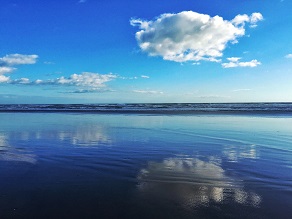From blue ocean to icy clouds

Related topics
Environment & climate action Funding Researchers European Research Council United Kingdom Environment Climate action, environment, resource efficiency and raw materialsCloud formation and weather predictions
Ice particles affect how long a cloud exists and how much rain, hail or snow it produces. They also help control temperature of the climate by reflecting sunlight (keeping surface temperatures cool) or trapping heat close to the Earth’s surface (keeping temperatures warmer). In the Polar Regions, climate is changing even more rapidly than any other part of the planet, yet predictions for how it will evolve in future remain uncertain. An improved understanding of cloud formation is a step closer to helping reduce uncertainties in global climate modelling.
“We need to understand the sources, fate and global distribution of particles which trigger ice formation in clouds, not only improve our weather models, but also to increase the confidence we have in climate model predictions of what will happen over the coming centuries. Understanding where ice nucleating particles come from is critical for predicting future climate" explains Dr Murray.
Ice from oceans and deserts
In order to freeze, cloud water droplets must contain a particle that can catalyse ice formation and growth - an ice nucleus. While there was evidence that mineral dust or bacteria from terrestrial sources could nucleate ice, the role of biological organic components of sea spray in this process had not yet been quantified.
For the first time, Dr Murray’s team shows that the organic waste from life in the oceans, which is ejected into the atmosphere along with sea spray from breaking waves, stimulates cloud droplets to freeze into ice particles. In polar oceans, for instance, ice nucleating particles in the atmosphere are made up of biological material, such as organic matter from phytoplankton:
"As the polar ice caps shrinks -we are heading for another record arctic minimum later this month- there will be more ocean from which these particles can be emitted, and this marine source of ice nucleating particles might become more important.”, explains Dr Murray.
The ERC grantee has also brought evidence of another source of ice nucleating particles. Feldspar, a mineral found in desert dust, could be one of the most important ice nucleating materials in the Earth's atmosphere. The research team has shown, too, how ice can crystallise from water taking a different form than the typical hexagonal crystal structure, with a possible impact in certain type of clouds.
Novel methods, industrial outcomes
With his ERC grant, Dr Murray has established a world leading centre for ice nucleation research and built a unique laboratory at the University of Leeds, where he designs experiments to quantify and understand ice formation in the atmosphere and builds cloud models that could improve weather and climate predictions.
The team has also identified effective materials for ice-nucleating and now explores strategies to control the processes for industrial applications, from cryo-storage of stem cells to making ice cream.
Scientific publication
A marine biogenic source of atmospheric ice-nucleating particles
Wilson, T. W. et al. Nature 525, 234–238 (2015)
More at ERC website
